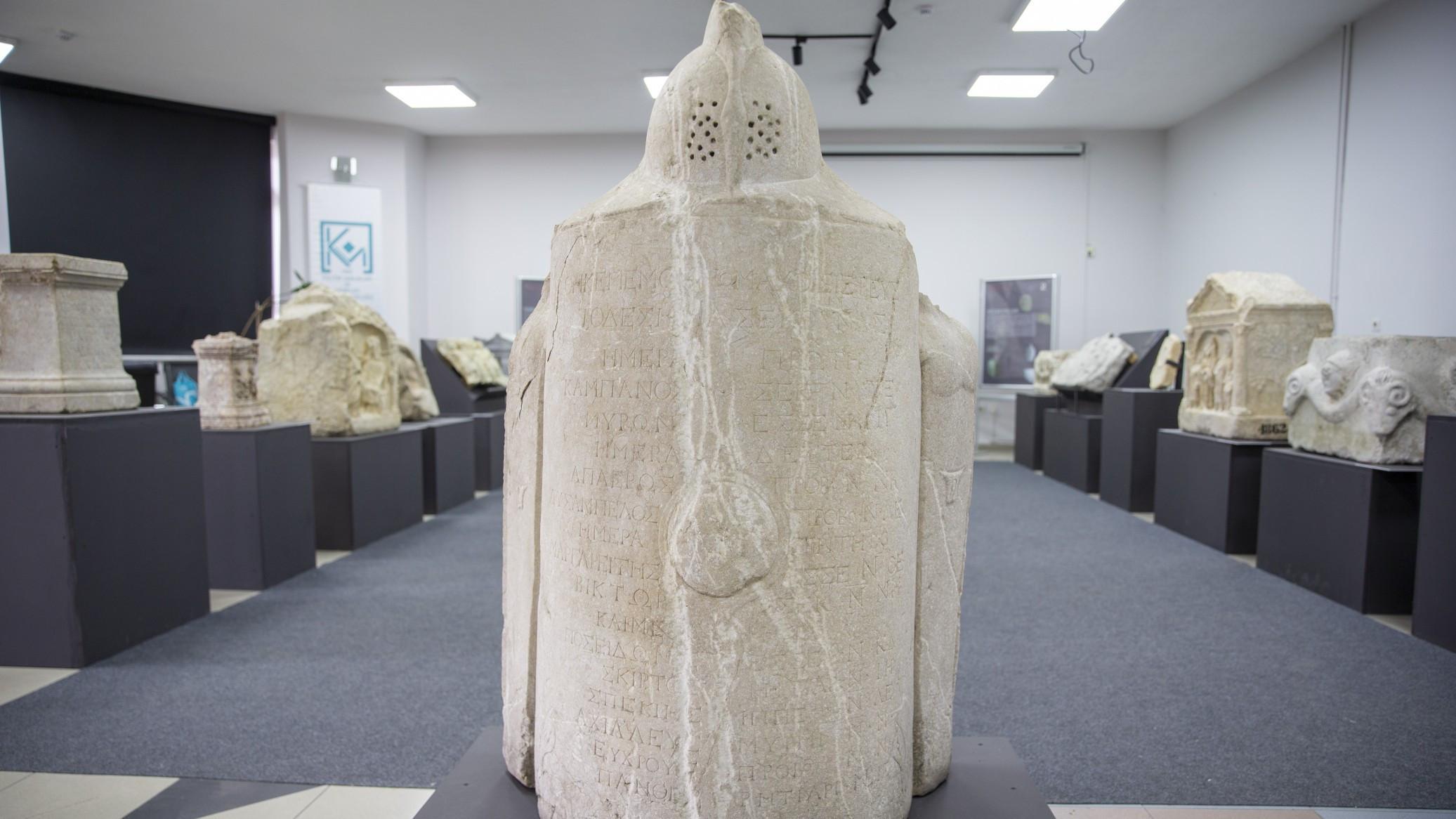
The “Gladiator Tomb Monument,” discovered in the city center in the northwestern province of Bolu and added to the museum collection in 1987, has been opened to the public for the first time.
The monument preserves the names and victories of gladiators who fought in bloody arenas during the Roman era to earn their freedom.
Found in the Tepecik Neighborhood, a site used as a cemetery during the Roman period, the monument was added to the Bolu Museum’s inventory and is now on display as part of the “From Kalkhedon to Klaudiopolis” exhibition. Dating back to the second and third centuries A.D., it was commissioned by Priest Secundus to honor gladiators who fought one-on-one, highlighting Klaudiopolis’ importance in Roman gladiatorial contests.
According to the Greek inscription, the battles lasted four days and the victorious gladiators included sword-and-shield fighter Campanus with 65 wins, chariot fighter Myron with 43, provocateur Apleros with 52, Chrysampelos with 35, chariot fighter Margarites with 75, Victor with 58, chariot fighter Poseldonlos with 24, net-and-trident fighter Skirtos with 18, mounted gladiator Spekles with 35, helmeted Achilleus with 40, provocateur Euchorous with 50 and net-and-trident fighter Panter with 15.
Bolu Museum Director Atılgan Kaya said that Klaudiopolis, a major Roman settlement, was also a cultural center where large gladiatorial arenas hosted combat. He noted that during Emperor Hadrian’s reign, Bolu saw high settlement levels and most of the city’s ancient artifacts date to this period.
Kaya added that gladiators, often selected from prisoners or slaves, could achieve fame and wealth in the arena and exceptional fighters could earn their freedom. The monument, listing all participating gladiators with their victories, demonstrates that gladiatorial contests were held not only in Rome but also in Bolu’s ancient stadium, underscoring the city’s significance in the Roman provincial network.
The inscriptions provide details not only on the number of victories but also on the types of fights, from sword-and-shield duels to chariot battles, provocations, net-and-trident combats, mounted fights and helmeted clashes. They illustrate the structured nature of gladiatorial combat and the social recognition gladiators received, especially those who survived multiple bouts and gained public admiration.
The monument is a rare historical source showing how Roman-era communities outside Italy engaged in gladiatorial culture. It highlights the local significance of Klaudiopolis and the wider spread of Roman traditions in Anatolia. Commissioned by a priest rather than a political or military leader, it reflects the integration of Roman entertainment, civic pride and religious commemoration.
Bolu Museum continues to preserve and study the monument, contributing to ongoing research on Roman provincial cities and social life. Its public opening allows visitors to experience firsthand the history of gladiatorial combat and the enduring legacy of fighters who risked life and freedom for fame.
The exhibition “From Kalkhedon to Klaudiopolis” showcases the historical and cultural continuity stretching from Antiquity to the Roman period in the Bithynia region, located in northwestern Anatolia, between Kalkhedon (Kadıköy) on the western edge and Klaudiopolis (Bolu) on the eastern edge.
A total of 47 artifacts, including 30 silver coins dating back to the fourth and thrrd centuries B.C. and 17 stones from the Roman era, have been presented to visitors for the first time.